Newsletter March 2023
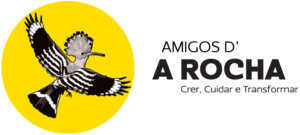
 Welcome Spring time! Have you seen this Palm tree? And visited this wonderful Natural Park?
Welcome Spring time! Have you seen this Palm tree? And visited this wonderful Natural Park?
S
N
A
P
SHOT

Natural Parks in Portugal

Natural parks are “areas which contain predominantly natural or semi-natural ecosystems, where the long-term preservation of biodiversity may depend on human activity, ensuring a sustainable flow of natural products and services”. In Portugal there are 13 Natural Parks.
Valley of Guadiana Natural Park
The Valley of Guadiana Natural Park is situated in the southeast of the country, in the middle area of the Guadiana River, in the Baixo Alentejo region and comprises the parishes of Mértola and Serpa, with a total area of 69 700 hectares.
The valley of the Guadiana is the central feature of the park, surrounded by different kinds of habitats (plains, holm oaks woods, cereal plantations, cork oak woods, shrublands) and important tributaries. The region has 4 different Protection Status: Special Protected Area, Special Conservation area Natura 2000, International Important Wetland area- Ramsar and Natural Park. One of its highlights is the Pulo do Lobo, where the river falls down into a gorge and disappears; and, as well, Ribeira do Vascão, important habitat for sweet water fish. The Natural Park was created in November of 1995, due to its high value of flora, fauna, geomorphology, landscapes and historical-cultural importance, aiming for its protection and conservation and to promote a sustainable development of the area.
The climate is one of the driest in the country and the landscape can change a lot through the year and between years (intensive rain and periods of drought). The area is also rich in endemic species (fish and plants) and a very important habitat for emblematic birds like the Great Bustard, Little Bustard, the Spanish Imperial Eagle and winter ground for the Common Crane.
The symbol of the park is a bird which is thought to be a bird of chase, the image came from an Islamic illustration of the XI century found on a ceramic plate.
IN FLIGHT…

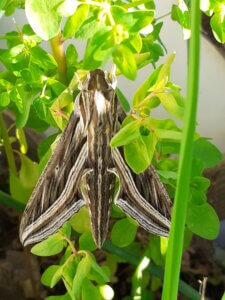 Silver-stripped Hawk-moth (Hippotion celerio, Linnaeus, 1758)
Silver-stripped Hawk-moth (Hippotion celerio, Linnaeus, 1758)
Family: Sphingidae
Wingspan: 70 to 80 mm
Habitat: Wide variety of habitats, including gardens, fields, waste places, farmland areas and coastal areas
Flight period: Throughout the year
Distribution: Canary Islands, Africa, Arabian Peninsula, Southeast Asia and Southern Europe.
Notes: The larvae feeds on a wide variety of plants: Rumex sp, Vitus sp, Galium sp. The caterpillar can have 2 colour forms: green and brown; for protection they have 2 large dorsal eyes and a spike in the posterior end. The adults are migrant, they feed on the nectar of plants and are important pollinators. In some areas it is considered a pest.
Tweet… Tweet…

Western Marsh Harrier (Circus aeruginosus, Linnaeus, 1758)

Photo by Guillaume Réthoré
Family: Accipitridae
Size: 43 to 55 cm Wingspan: 115 to 140 cm
Habitat: Wetlands (coastal lagoons, marshes, estuaries, moors, reed beds) with abundant aquatic vegetation preferably reed beds.
Status: Resident and winter migrant (in Portugal it is more common on the estuaries of the western coastal area, where it breeds; during the winter it is more abundant and has a slightly larger distribution).
Distribution: Europe, North-western Africa, part of Middle East and Central Asia
Notes: The hunting is done with low flight and with its long wings in a V flattened shape. The population decreased a lot between the XIX and XX century, due to habitat loss, habitat change and human activity. In Portugal this species has a conservation status of Vu (Vulnerable).
DID YOU KNOW? 
- February should be a quite month for birds, but it seems like Spring is getting earlier each year! Some birds arrivals: House Martin (Delichon urbicum), Barn Swallow (Hirundo rustica), Red-rumped Swallow (Cecropis daurica), Yellow Wagtail (Motacilla flava) and Spotted Cuckoo (Clamator glandarius). Get ready, March will bring some of our summer visitors!
- This year, A Rocha will again organize the Pollinators week, between 20th and 25th of March. Soon the full program will be available on our social networks. For more information contact: paula.banza@årocha.org

Friends Event – Wednesday 8th March 2023
Picnic and Birdwatching in Salgados with Gui
12.00 to 17.30
Setting off from Cruzinha at midday, we will go in the minibus to Salgados and start the afternoon with a picnic lunch (please bring your picnic). From 14.00 Gui will guide us on a birdwatching afternoon in the area. We will return to Cruzinha at 5.30pm.
There will be 8 places in the minibus and 2 places in a car. If you prefer a pick-up in Lagoa, we can meet you in the Auchan Supermarket car park (please confirm)
Ticket price – 20 Euros (Friends) 25 Euros (Non Friends)
If you have any questions about this trip, please email to friends.arpt@arocha.org
Look forward to seeing you on our first trip of 2023.
Book here Friends Book here Non Friends
This event is being organized by Marina Hardy and Christine Weltzien (volunteers for the Friends of A Rocha)
 Ornamental trees
Ornamental trees
In our parks and gardens it is possible to see amazing trees, although most of them are exotic! Plants native from other parts of the world used as ornamental. Maybe you have seen some of them….
Canary Island Date Palm (Phoenix canariensis Chabaud)

Photo by Filipa Bragança
Family: Arecaceae
Type of plant: Evergreen tree
Size: 10 to 20 metres
Distribution: Native from Canary Islands, widespread in all temperate areas
Flower bloom time: April to May
Where to see: Lagos avenue close to the river
Curiosity: Can tolerate a wide range of exposures: deep shade, a wide range of soil types, maritime climates and above zero temperatures (not less than -10° C, for short periods of time), severe drought, and flooding. This species resists strong wings without breaking due to the flexibility of its trunk. The Red Palm Weevil (Rhynchophorus, ferrugineus) is a kind of snout beetle which decimates the Canary Island Date Palm, it is now considered a plague in Portugal.
POPPED UP

Family: Asteraceae
Plant type: Herbaceous perennial
Flower bloom time: February to May (depending on weather conditions)
Habitat: Ruderal – road sides, farmland areas, fallow lands, urban wastelands.
Distribution: Mediterranean Region and Southwest Asia. Naturalized in some areas of East Asia and North America.
Notes: This species can be found in 2 different forms, the flowers can be all yellow or white with yellow at the base. This flower is in fact a group of flowers (flower head), the yellow flowers in the middle are hermaphrodite (both male and female organs) and the external ones have only female organs.
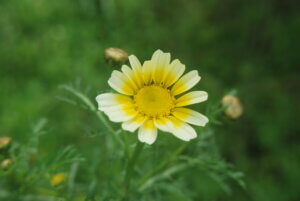
Photo by Filipa Bragança
Garland Chrysanthemum (Chrysanthemum coronarium, L.)
DATES TO REMEMBER

2nd, 9th, 16th, 23th and 30th March – Cruzinha Bird ringing display & Moth Talk (10 am to 12 am). Book here
8th March – International Woman’s Day
19th March – Father’s Day
20th March – Spring Equinox
20th to 25th – Pollinator’s week
26th March – The clocks change British Summer Time (forward by one hour)
Thank you for supporting the Friends of A Rocha Portugal

Physiotherapy, Massages (relaxation, sports, therapeutic)
Other therapies
Beauty (manicure, pedicure, hair removal, facials)
Open Monday to Friday

Dr Roy Rodrigues
Av. Do Brasil, Qta das Palmeiras, Lt P2, R/c A, 8500-299 Portimão
(+351) 282180683
royaldente@gmail.com
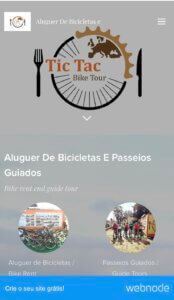
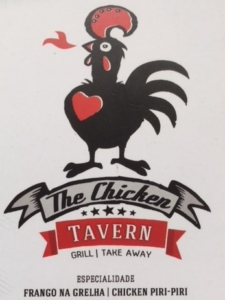
Urbanização Mar e Serra n° 47, Alvor
8500 – 783 Portimão
(+351) 911597735
Thought of the month 
“We cannot solve our problems with the same thinking we used when we created them.” – Albert Einstein (1879-1955), German Theoretical Physicist, developed the Theory of Relativity, Nobel Prize of Physics in 1921

LETS BE GREEN – LETS BE GREEN – LETS BE GREEN 
Use less ink
- Switching your font from ARIAL to CENTURY GOTHIC save 30% ink when printing

- This is such an easy thing to do. Obviously it is always better to go paperless, but sometimes you need to print documents. Century Gothic is thinner and naturally uses much less ink.
LETS BE GREEN – LETS BE GREEN – LETS BE GREEN
 Sea life
Sea life
The sea is a big part of our planet and we still have a lot to discover! It is also threatened by human activity – pollution! Like the micro-plastics, very small particles of plastic floating in the water column ending inside the most of the sea animals… some of them are struggling to survive and some end up on our plates. Let’s find them
Marbled Rock Crab (Pachygrapsus marmoratus)
 Phylum: Arthropoda
Phylum: Arthropoda
Class: Malacostraca
Size: 22 to 36 mm (diameter of the carapace)
Lifespan: up to 4 years
Distribution: Eastern Atlantic (southern Europe) and Mediterranean
Habitat: Marine benthic. Intertidal zone; can be found in rocks and crevices from upper to middle shore
Behaviour: can resist long periods out of the water. Very fast in movements
Food habits: Omnivorous (but not opportunistic), feeds on algae and other animals; its favourite food are mussels and limpets.
Ecological importance: Food for octopus (adults) and the larvae is part of zooplankton, food source for many animals (fish, birds)
Notes: The larvae of this species are planktonic which allows the gene flow between populations and the colonization of new areas.
Sustainability Champions 
Sustainability Champions from around the World– Looking at ways to curb pollution and waste management.
We would like to thank Daniel Hartz, the founder of Sustainability Champions for giving us the permission to share this information.
 CLIP is a portable propulsion device designed to transform any bike instantly. By switching to CLIP, NEW YORK city commuters would save 1.5 million gallons of gasoline and eliminate 12,900 metric tonnes of CO2 emissions every year.
CLIP is a portable propulsion device designed to transform any bike instantly. By switching to CLIP, NEW YORK city commuters would save 1.5 million gallons of gasoline and eliminate 12,900 metric tonnes of CO2 emissions every year.
Somnath ’Som’ Ray, the CEO and founder of @clipbike a company that specialises in making a portable propulsion device that is designed to transform any standard bike into an e-bike instantly.
Transportation is responsible for 24% of global direct CO2 emissions, road vehicles account for nearly three quarters of transport emissions, and these numbers are NOT decreasing. Road vehicles are polluting our air at unprecedented levels.
CLIP Bikes have found an electronic solution for biking, The powerful friction drive delivers smooth power on demand to make any urban commute easy as the breeze! an E- BIKE. CLIP is as light as a laptop, fits in your backpack. Check it out www.clip.bike

Check the website for dates for organised tours
Guillaume Réthoré (Gui)- My life with birds: Lanner Falcon (Falco biarmicus)
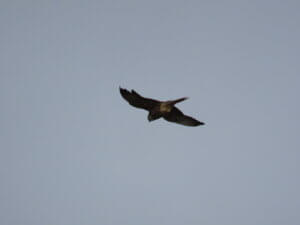 Every winter some of the A Rocha Portugal team participate in a citizen science program called ARENARIA. The aim is to count shorebirds walking along the coast. Usually, we do not see much but the walk is nice. However, sometimes, you get surprises! On January 9th, as I had just finished a transect near the trig point at Luz, I was having a rest when what I thought was a falcon appeared nearby. It came close to the cliff and flew up in front of me. A Peregrine Falcon? I thought since they breed in the area. This bird, however, looked different and a little voice was telling me “ I think it’s a Lanner?”. I took several pictures (quite bad since the weather was grey), studied them and shared them with a colleague who confirmed my identification. It could be the same bird seen near Barão de São João in September.
Every winter some of the A Rocha Portugal team participate in a citizen science program called ARENARIA. The aim is to count shorebirds walking along the coast. Usually, we do not see much but the walk is nice. However, sometimes, you get surprises! On January 9th, as I had just finished a transect near the trig point at Luz, I was having a rest when what I thought was a falcon appeared nearby. It came close to the cliff and flew up in front of me. A Peregrine Falcon? I thought since they breed in the area. This bird, however, looked different and a little voice was telling me “ I think it’s a Lanner?”. I took several pictures (quite bad since the weather was grey), studied them and shared them with a colleague who confirmed my identification. It could be the same bird seen near Barão de São João in September.
The Lanner is a rare species in Portugal. The closest breeding birds are found in Morocco and Italy.
Text and photo by Guillaume Réthoré
Editor: Filipa Bragança
English proof reading: Helen Rodda
Portuguese proof reading: Lena Soares
Production controller: Helen Rodda
Email: friends.arpt@arocha.org
Thank you for supporting us!
Hope to see you soon!

 What makes a good Birthday present?
What makes a good Birthday present?



